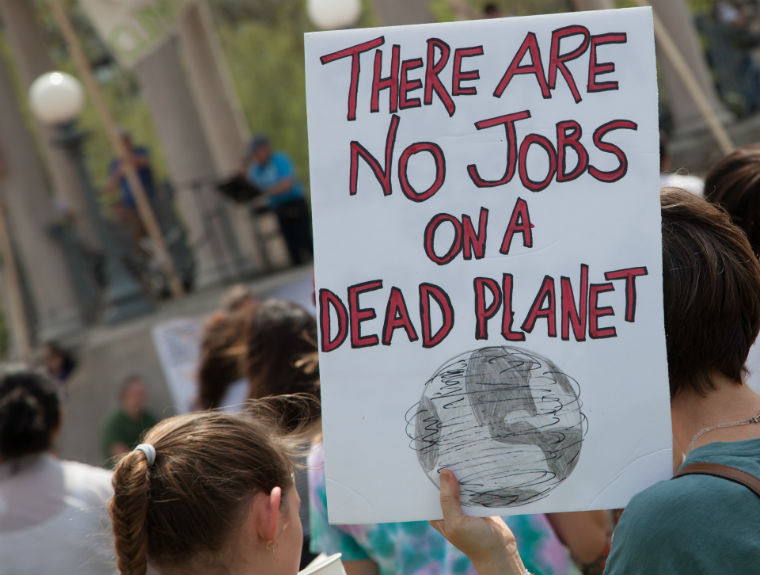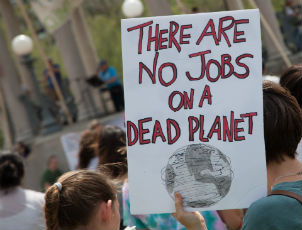While solid economic and financial performance may be an indicator of a “great” company, legendary status isn’t solely based on stock returns.
Companies such as Zappos, Nordstrom Inc., USAA, Costco and Lego stand out as legendary brands in the marketplace because they obsess about both the customer and the employee experience. Their customers recognize and celebrate them, and their employees engage and act as spokespeople for the business. In this sense, customers and employees alike become loyal promoters of the brand, and it is the combination of the two that makes for a legendary status.
There are five characteristics that distinguish great and legendary companies: Others Tell Stories; Customer Value Focused; Live the Purpose; Promoting Stakeholders; and Transcend Industry. Let’s take a deeper dive into each distinctive characteristic.
Others Tell Stories
The word “great” refers to being big in size, long in duration, or above average in quality. The word “legendary” means something is remarkable enough to be famous. Legendary goes beyond great. A business has a legendary status when customers begin to tell — and retell — stories about their unique and positive experiences with the company.
Zappos has become known for exceptional customer service. The company trains its call center representatives to “go above and beyond” for every customer without worrying about the length of time they spend on the phone. They ask representatives to develop a personal and emotional connection with each customer. This high standard was showcased when Tony Hsieh, the CEO of Zappos, was with a group of hungry people late one evening in Santa Monica, California. Food service was no longer available at their hotel. They cajoled a woman in the group (not a Zappos employee) to call the Zappos call center, which is open 24/7, to find the names of local food establishments still open and willing to deliver at that hour. After a bit of understandable confusion and brief research, the representative provided the names of five pizza places still open, according to a 2010 Harvard Business Review article by Hsieh. He created a Zappos story with this experience — one which is being told and retold all over the world and has become free marketing for the company.
Adult fans of Lego, the Danish toy company, have organized themselves into groups. These fans know much more about Lego bricks and systems than the average customer and typically much more than Lego employees. Known as AFOL, they show incredible passion for Lego by constantly posting creations and ideas online. Members meet up at self-organized user groups and even have an annual exhibition called BrickCon. Most of the hundreds of millions of Google search hits and tens of thousands of YouTube videos on Lego come from this fan base. This is a good example of how customers share stories and promote a brand’s business.
Customer Value Focused
Companies that know their customers have a significant advantage over competitors. They educate their employees on the specific needs of their target audiences and provide functional product offerings that offer exceptional significance and value. By understanding their targeted customers, legendary companies develop the opportunity to create an emotional connection with customers by speaking to their needs and giving them a positive experience.
USAA, a financial and insurance services company, serves primarily military personnel and their families. USAA offers a wide array of banking and insurance services, supplying members of the institution with a single relationship to manage, thereby avoiding hassles and saving time.
More importantly, by speaking the language of the military personnel they serve, USAA provides a sense of affiliation and belonging as well as familiarity, which reduces the anxiety common to banking and insurance relationships. By considering both the functional and emotional needs of their customers, USAA focuses in on providing high value that has resulted in a much deeper relationship with its customers.
 Companies like clothier TOMS take it a step beyond the emotional and functional elements of value to further connect with their customers through benefiting others. Research by Bain & Co. and published in the Harvard Business Review in 2016 correlated the elements of value provided to customer groups with the six levels of human needs on psychologist Abraham Maslow’s hierarchy of needs (physiological, safety, love and belonging, esteem, self-actualization).
Companies like clothier TOMS take it a step beyond the emotional and functional elements of value to further connect with their customers through benefiting others. Research by Bain & Co. and published in the Harvard Business Review in 2016 correlated the elements of value provided to customer groups with the six levels of human needs on psychologist Abraham Maslow’s hierarchy of needs (physiological, safety, love and belonging, esteem, self-actualization).
The research found that more elements of value offered to customers resulted in higher levels of loyalty and higher levels of revenue growth. Emotional and functional elements of value typically address needs on the first three levels of critical human needs. Providing value elements that speak to higher level needs can create an even stronger connection with customers. By giving a pair of shoes away for every pair purchased, TOMS provides a sense of serving others that fulfills the upper levels in Maslow’s hierarchy of needs and attracts a specific, loyal and activated customer group.
Live the Purpose
Legendary companies are driven by an all-encompassing purpose. They nurture everyone involved with the company — both internally and externally — to adopt that purpose. Internally, legendary companies engage and emotionally connect their employees in their purpose, converting them into voluntary “spokespeople” for the company. Externally, customers become promoters for the business when they tell others of their positive experiences and personal connection to the company’s purpose.
As a toy company, Lego’s purpose and vision are about human possibility. The company wants to “inspire and develop the builders of tomorrow” and “invent the future of play.” Lego realizes that its success hinges on motivated employees that are inspired by the company purpose and feel engaged in the strategy. To understand how this motivation manifests internally, the company conducts an annual employee survey. This survey includes a question, measuring the degree employees are willing to recommend Lego as an employer. This question is called the Employee Net Promoter Score, or eNPS, and Lego uses this metric to benchmark employee engagement and satisfaction. With a stated goal of making Lego “the best place to work in the world,” the survey helps Lego determine the underlying drivers of employee engagement and satisfaction. Lego considers the voice of employees as important as the voice of customers.
Nordstrom is another example of a company’s purpose being both internally and externally embraced. Nordstrom’s purpose is “to deliver the best possible shopping experience, helping customers possess style — not just buy fashion.” The company provides “superior customer service and product quality” in the brick and mortar retail business as well as online. Personalized sales associates research their customers to better assist them. Customers, in turn, are quick to share those experiences in their communities.
Promoting Stakeholders
Legendary companies pay careful attention to how they are viewed by their customers and employees. They aim to have engaged employees and loyal customers. Engaged employees are likely to be active spokespeople for the company, and loyal customers will promote the business to others. Companies with one, but not the other, won’t attain legendary status.
The Net Promoter Score is the best quantitative measure of how customers perceive a company or brand. “Great” companies score above 55, which is recognized as a desirable rating, and companies that score above 70 are a rarity. Very few companies achieve this level of loyalty from their customers. To complicate matters, maintaining loyalty requires constant attention since the NPS — a measure of customers’ perception — can shift quickly. USAA had a NPS score of 75 in 2015, while the general financial industry averages around 35. Zappos’ recent scores have been in the 50s; the retailer was recently outranked in NPS by its parent company, Amazon. In 2016, Nordstrom scored the highest of all “officially measured” consumer brands with an amazing NPS of 80. They “beat” Costco, which scored 79 the prior year.
In a “State of the American Workplace” report from 2013, Gallup pollsters concluded that 70 percent of the American workforce is disengaged from the company that employs them. Disengaged employees may passively, if not actively, speak negatively about the business and consequently take part in sabotaging its reputation. Instead of focusing on employee satisfaction, legendary companies concentrate on creating employee engagement by instilling a culture that is aligned with the company’s purpose. Employees in these companies are proud to represent the business, creating invaluable and positive ripple effects in the marketplace. Metrics to monitor the level of engagement are now frequently used, including surveys that ask questions such as, “How likely are you to recommend employment at the company to a friend?” Glassdoor allows current and former employees to review online the companies (and CEOs) for which they work or have worked. While skewed by reviews from former employees, the website’s scoring does provide an insight into company culture and how likely employees are to recommend the company to a friend. Scores above 60 indicate the company has a “great” workplace culture.
Legendary companies differentiate themselves in the marketplace and redefine, or at least reprioritize, market factors to transcend their industry. This is often at odds with industry best practices, which homogenize instead of differentiate. A best practices approach can prevent deep listening to the customer and hinder learning, which makes it vital to scrutinize the limitations that come with such an approach. Legendary companies take deliberate chances on investing in factors that differentiate them in the marketplace.
Costco’s refund policy and rewards programs are legendary. The company allows for returns of anything purchased (with a few exceptions) at any time for a full refund without a receipt as long as you have a membership. Costco calls it their “Risk-Free 100 Percent Satisfaction Guarantee.” This benefit combined with the cash back rewards from using the store’s branded credit card or being an executive member is seen by customers as an investment in service that surpasses the industry.
Likewise, Zappos was one of the first to introduce free shipping and free returns of their products. Despite the associated cost, this offer differentiated Zappos in the marketplace and cemented its legendary position among online retailers.
The Path from Great to Legendary
There is no linear path to follow to achieve legendary status as a company. Legendary companies break with the status quo to transcend their industry and receive societal recognition. They dare to ask questions that fundamentally change industry paradigms.
The path starts with a relentless obsession to bring utility, value and service to customers and employees. Legendary companies deliver quality products and go above and beyond what is typically required in terms of service and customer care. They make an emotional connection so the relationship with their customers goes beyond satisfaction to a real sense of affection. Employees in these companies are happy and engaged.
While the path to becoming a legendary business is neither linear nor easy, both the journey and the destination are well worth the effort.
Soren Eilertson is an executive consultant, adviser and an adjunct faculty professor of business strategy at Pepperdine University’s Graziado School of Business management. Comment below or email editors@workforce.com.





















